Nutcracker Museum
Visit our Sister Sites at:
www.kidslovenutcrackers.com and
www.nutcrackerday.com
April 2019 ~ 2nd Quarter Newsletter from The Nutcracker Lady
DOES IT HAVE A TAIL????
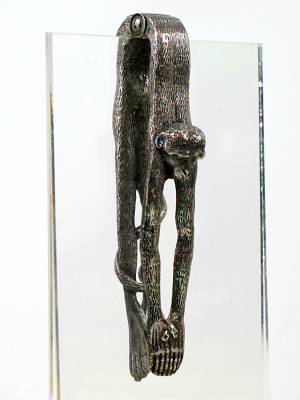
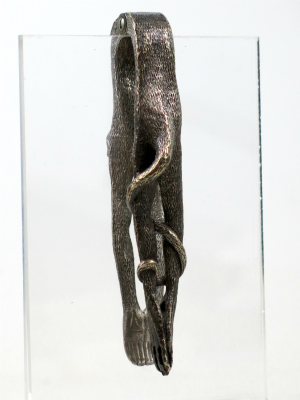 |
||
| During the cold winter months when few tourists dare to cross the snowy mountains to come to the Nutcracker Museum, it is cleaning, dusting, painting and polishing time for the museum staff. One of my jobs is to polish the silver nutcrackers, and many times I pause to admire one of the beautiful pieces. And one such French nutcracker depicting a monkey, demanded my complete attention, for as I turned it over, I noticed its tail gracefully wound around the handle. (pictured above) | ||
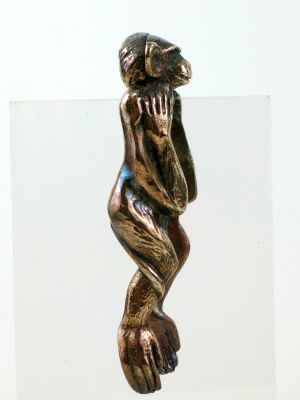
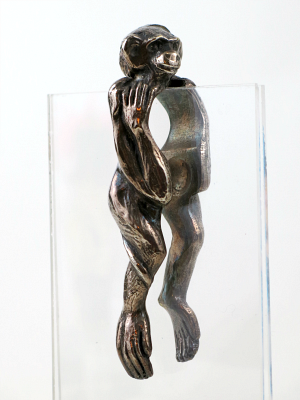 |
||
| Then I remembered that most monkey species have tails while apes (gorillas, chimps and orangutans) do not. Leaving my polishing tools, I spent the next hour looking for primates which had tails, and I found a second silver monkey with tail, and also from France. (pictured above) | ||
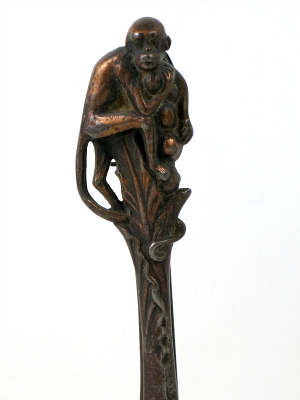 |
Another money with a tail is this iron nutcracker with copper wash that was crafted in England in the early 19th century. It is a direct pressure nutcracker that will crack 2 different sizes of nuts. |
|
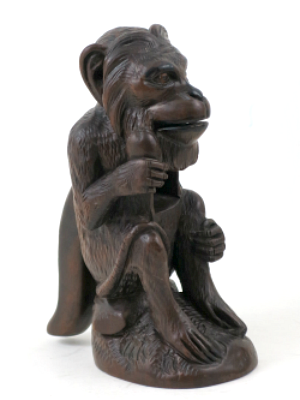 |
Moving into the antique wooden showcases I found an intricately carved monkey with tail draped over his leg. It was carved in Switzerland from beech wood and dated 1860. |
|
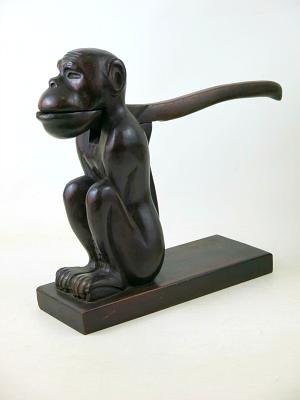 |
Another interesting monkey showing a tail is this striking one that was carved in South America from ironwood and measures 11inches. |
|
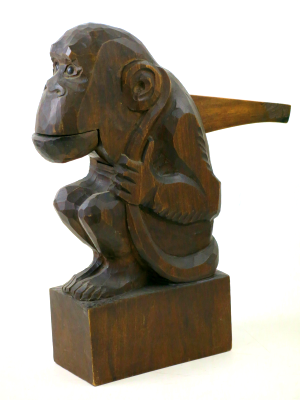 |
An even larger wooden monkey showing a tail is one from Germany measuring 11.5 inches. It was carved in the early 20th century of conifer wood. The museum shows a number of similar figures, but this is the only one which shows a tail. |
|
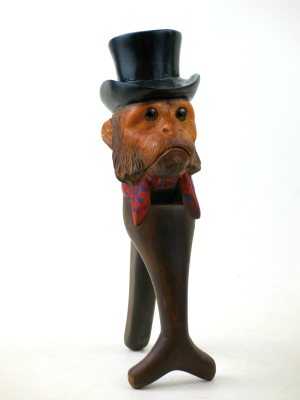 |
Most of the primates in the museum are just carved heads so we do not know if they indeed do have tails. However it is not the tail of the monkey that attracts the most attention, but the HAT!!! Yes, this monkey sporting a top hat is the most popular primate in the museum! |
|
|
A bit more about monkeys and apes… A monkey cannot swing from tree
to tree, but runs along the top of the branches as its body
structure is more like that of a cat or dog. Apes have larger brains
and bodies than monkeys and their shoulder structure allows them to
swing from tree to tree. |
||
|
Arlene Wagner,
The
Nutcracker Lady |
07/23/21
Quick Links
Dogs that are able to be carried at all times may come into the museum.
Service animals are
always welcome.
Contact Us
735 Front Street
P.O. Box 2212
Leavenworth, WA 98826
(509) 548-4573
MUSEUM HOURS
11:00PM - 5:00PM Daily
We suggest visitors arrive at the museum at least 30 minutes before closing.
Nutcracker Museum Mission Statement:
"To foster and encourage the interest of the general public of the importance of nuts in the diets of humans throughout history and in the evolution of the nutcracker. No other tool or collectible has shown such a wide diversity of material and design as the implements used to crack the hard shell of a nut".
Museum Admission:
Adults - $5.00 (Ages 17 - 64yrs)
Seniors - $3.50
(Age 65yrs +)
Youth - $2.00 (Ages 6 - 16yrs)
Child - FREE (Ages 0 - 5yrs)
Active
Military - FREE (Spouse & Children Free with ID)
